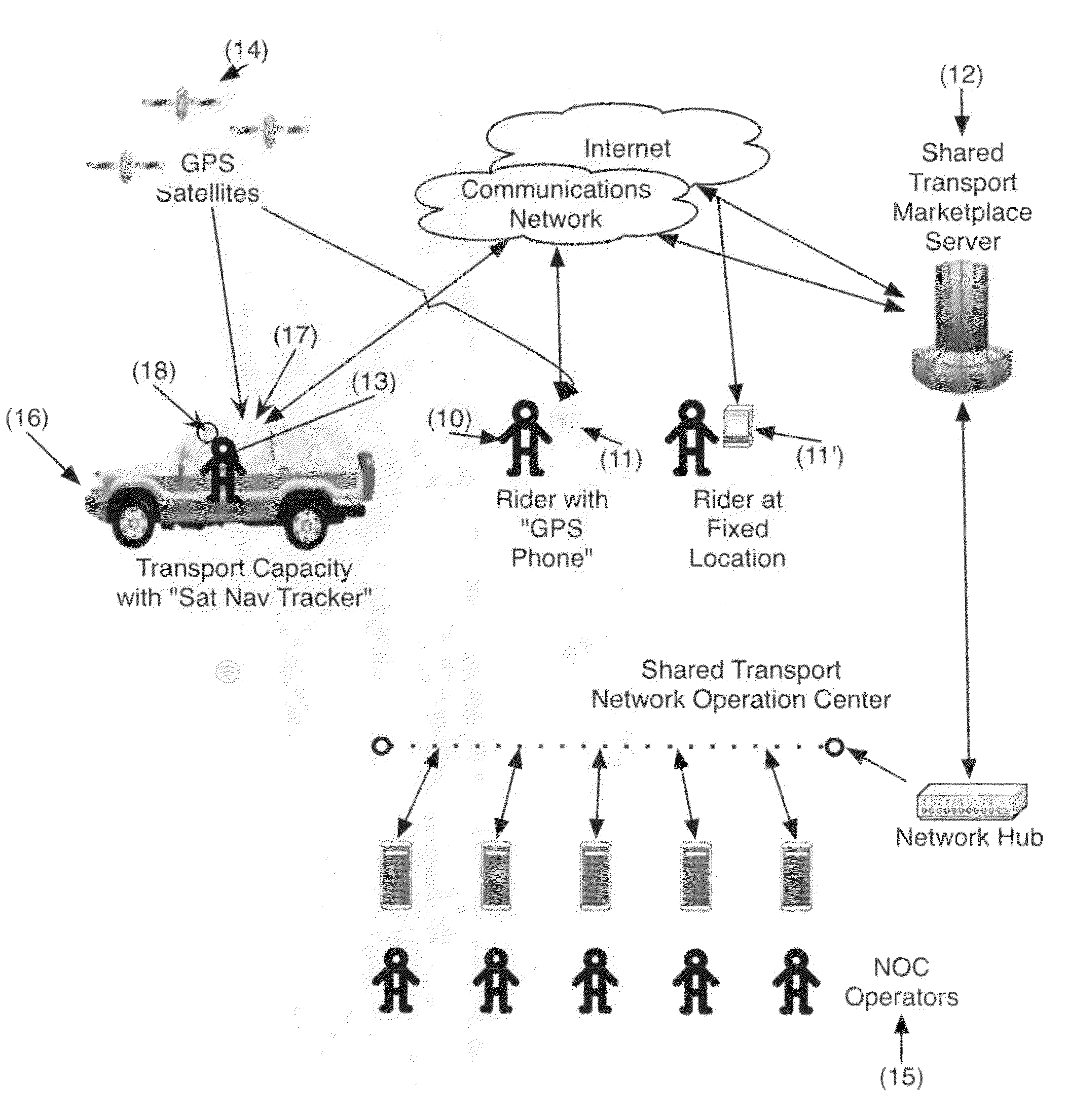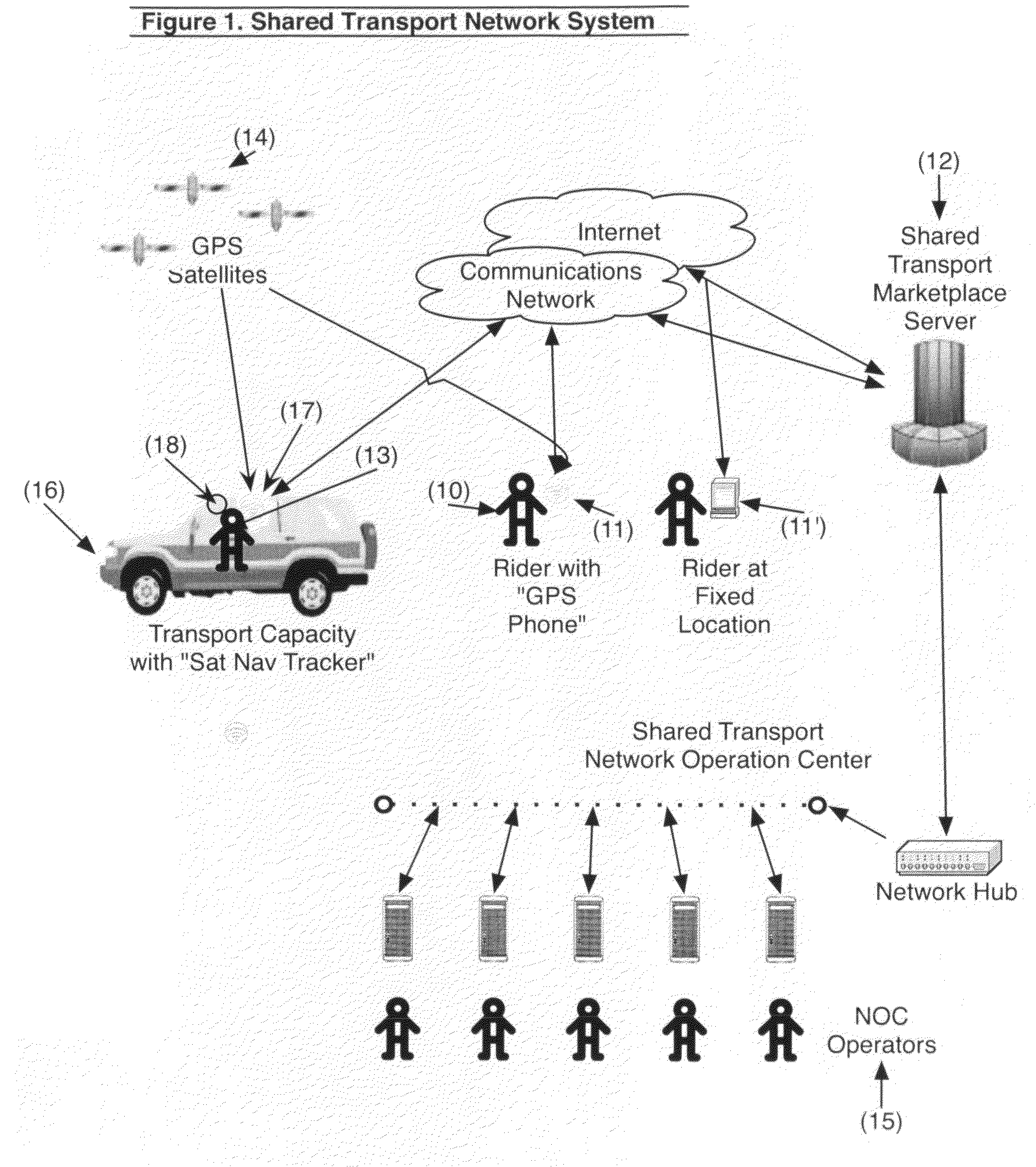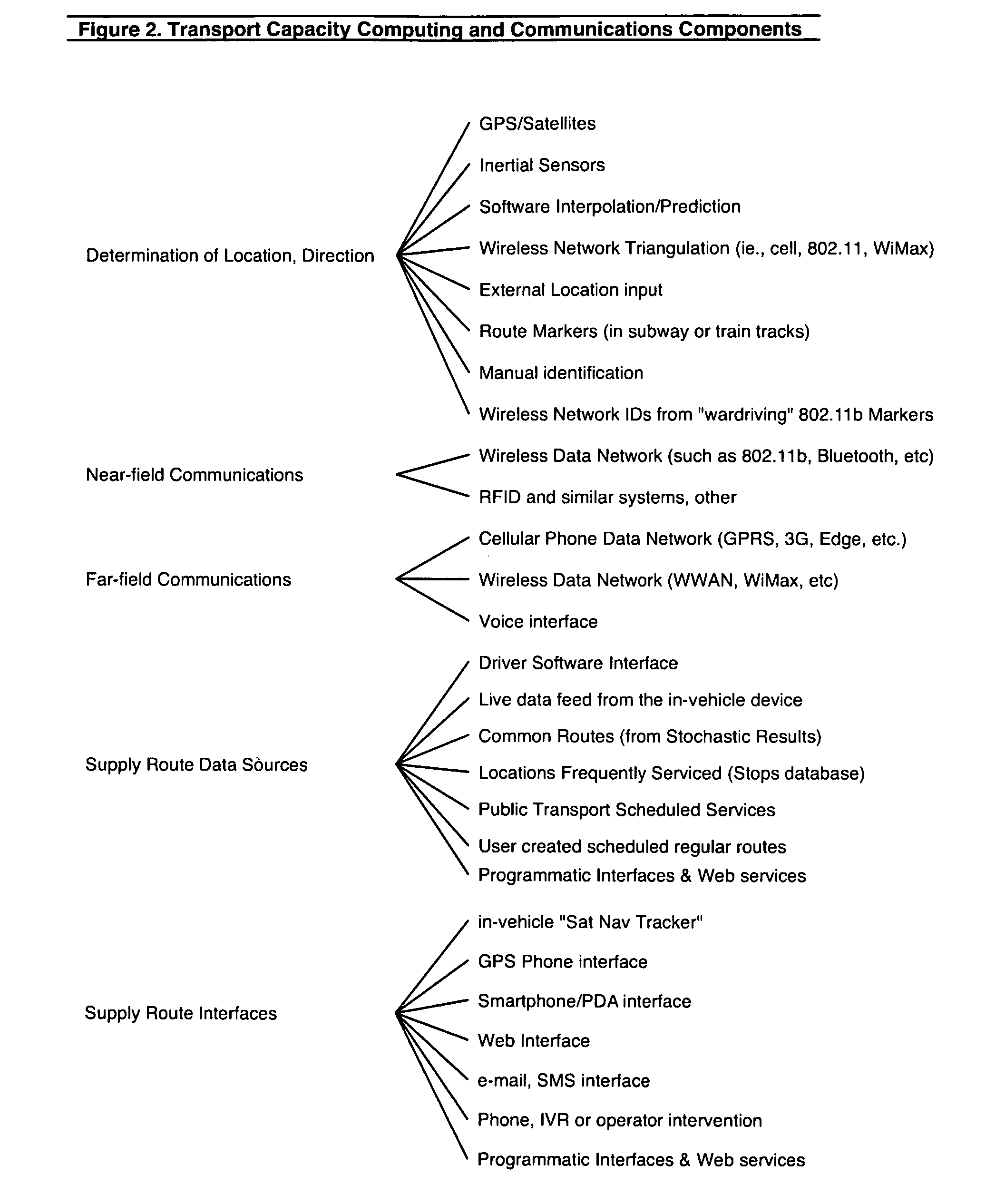Shared transport system and service network
- Summary
- Abstract
- Description
- Claims
- Application Information
AI Technical Summary
Benefits of technology
Problems solved by technology
Method used
Image
Examples
Embodiment Construction
[0060]Referring to FIG. 1, a person 10 desiring transportation service (“Rider”) has a personal communications device 11, optimally equipped with location information (“GPS Phone”), and uses this device 11, optimally equipped with a software layer with transport intelligence (“Rider Software Interface”), to signal a transportation marketplace network (“Shared Transport Marketplace”) 12 with a demand interest for a particular start-point (“Pick-up Point”) and endpoint (“Destination Point”, and together, the “Demand Route”). The Rider 10 has previously registered with the Shared Transport Marketplace 12, providing whatever registration details are necessary to contact and verify the identification of the Rider 10.
[0061]Alternatively, the Rider 10′ may employ a fixed communications device 11′ in order to communicate with the Shared Transport Marketplace 12.
[0062]At the same time, all vehicles that wish to provide transportation services which are in transit (“Transport Capacity”) have ...
PUM
 Login to View More
Login to View More Abstract
Description
Claims
Application Information
 Login to View More
Login to View More - R&D
- Intellectual Property
- Life Sciences
- Materials
- Tech Scout
- Unparalleled Data Quality
- Higher Quality Content
- 60% Fewer Hallucinations
Browse by: Latest US Patents, China's latest patents, Technical Efficacy Thesaurus, Application Domain, Technology Topic, Popular Technical Reports.
© 2025 PatSnap. All rights reserved.Legal|Privacy policy|Modern Slavery Act Transparency Statement|Sitemap|About US| Contact US: help@patsnap.com



